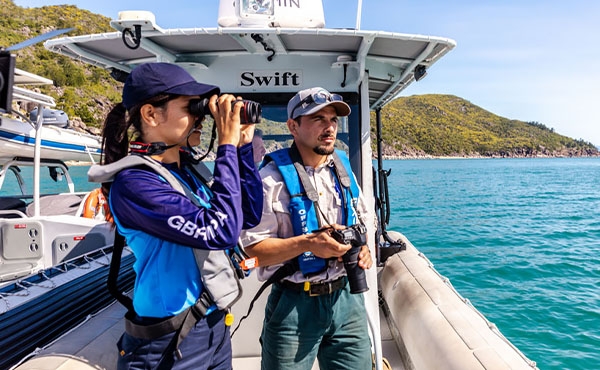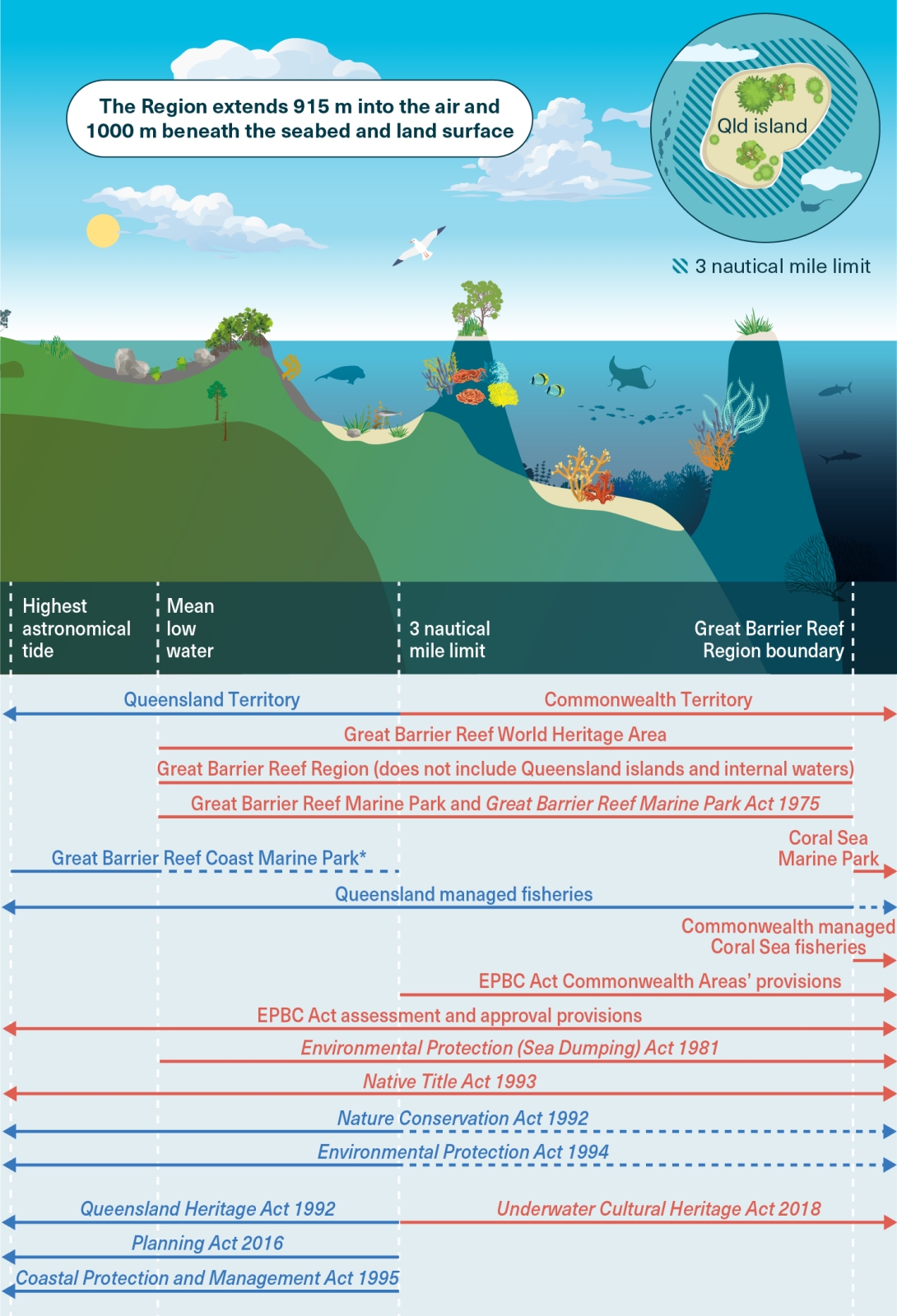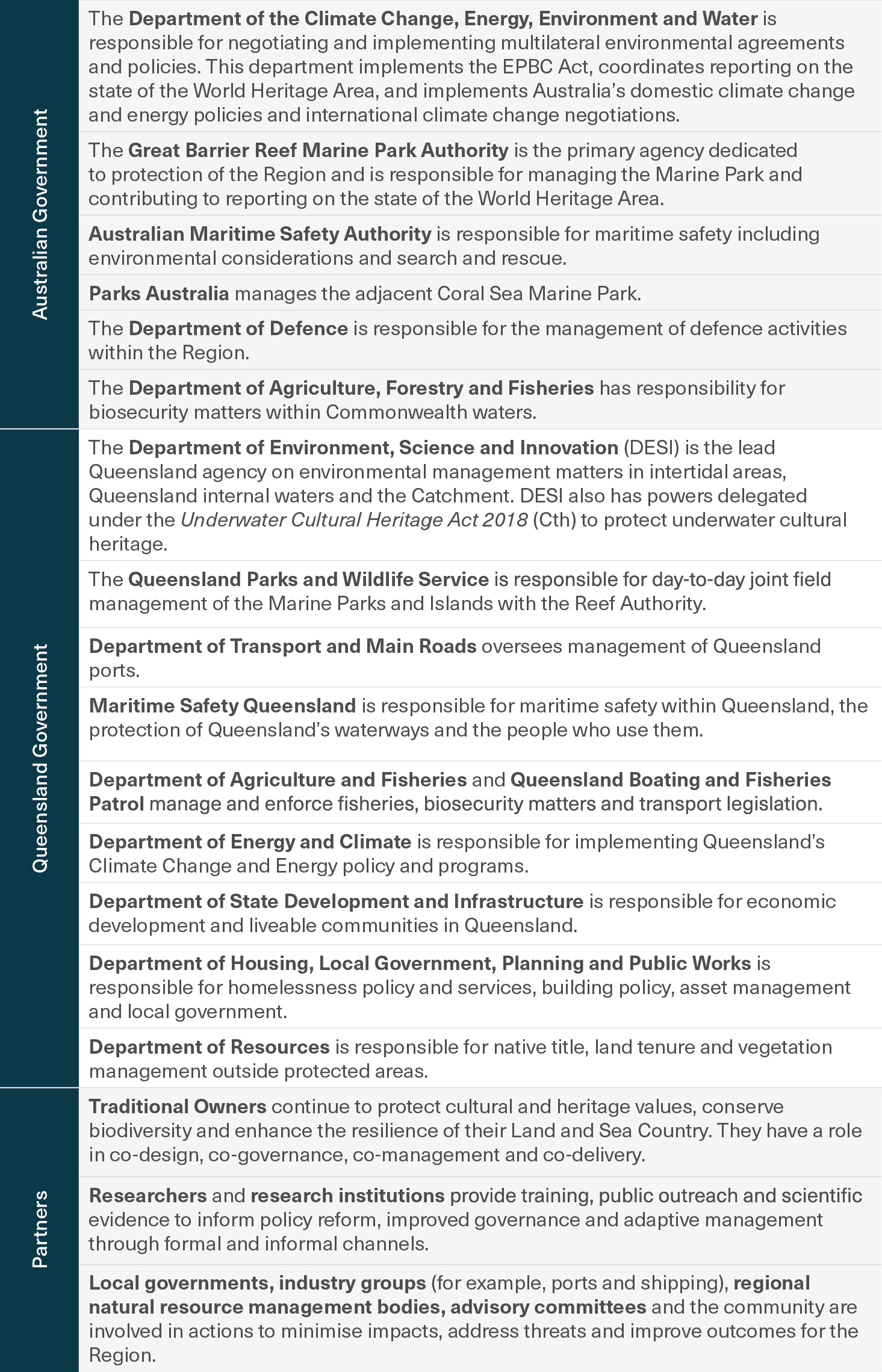Protection and management responsibilities within the Region
The Australian and Queensland governments have statutory responsibilities for the protection and management of the Region in their respective jurisdictions (Figure 7.1). Australian Government legislation protects the Reef and Australia’s world and national heritage under specific constitutional powers. The Queensland Government is primarily responsible for the regulation of natural resource management, environment protection and land use planning.
The Reef Authority manages the Great Barrier Reef Marine Park in accordance with the Great Barrier Reef Marine Park Act 1975 (Cth) (Marine Park Act). The main object of this legislation is to provide for the long-term protection and conservation of the environment, biodiversity and heritage values of the Region. The Australian and Queensland governments work in partnership, as formalised in the Great Barrier Reef Intergovernmental Agreement 2015 1300, on many matters within the Marine Park, the adjacent Queensland Great Barrier Reef Coast Marine Park and Queensland Island National Parks. The Reef 2050 Plan provides an overarching strategic direction and framework for the Australian and Queensland governments to work with partners to protect and manage the Reef (Box 7.1).2




